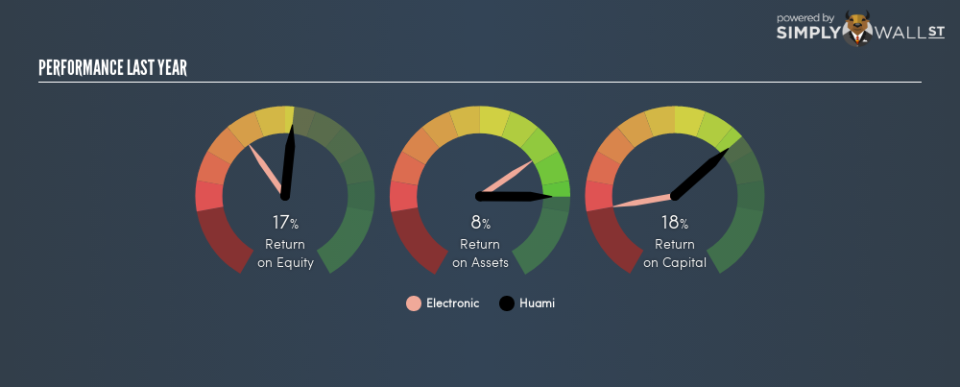Why You Should Like Huami Corporation’s (NYSE:HMI) ROCE

Want to participate in a short research study? Help shape the future of investing tools and you could win a $250 gift card!
Today we are going to look at Huami Corporation (NYSE:HMI) to see whether it might be an attractive investment prospect. Specifically, we’re going to calculate its Return On Capital Employed (ROCE), in the hopes of getting some insight into the business.
Firstly, we’ll go over how we calculate ROCE. Second, we’ll look at its ROCE compared to similar companies. And finally, we’ll look at how its current liabilities are impacting its ROCE.
Understanding Return On Capital Employed (ROCE)
ROCE is a metric for evaluating how much pre-tax income (in percentage terms) a company earns on the capital invested in its business. Generally speaking a higher ROCE is better. In brief, it is a useful tool, but it is not without drawbacks. Renowned investment researcher Michael Mauboussin has suggested that a high ROCE can indicate that ‘one dollar invested in the company generates value of more than one dollar’.
How Do You Calculate Return On Capital Employed?
Analysts use this formula to calculate return on capital employed:
Return on Capital Employed = Earnings Before Interest and Tax (EBIT) ÷ (Total Assets – Current Liabilities)
Or for Huami:
0.18 = CN¥182m ÷ (CN¥2.8b – CN¥1.1b) (Based on the trailing twelve months to September 2018.)
Therefore, Huami has an ROCE of 18%.
View our latest analysis for Huami
Is Huami’s ROCE Good?
One way to assess ROCE is to compare similar companies. Huami’s ROCE appears to be substantially greater than the 11% average in the Electronic industry. We consider this a positive sign, because it suggests it uses capital more efficiently than similar companies. Independently of how Huami compares to its industry, its ROCE in absolute terms appears decent, and the company may be worthy of closer investigation.
It is important to remember that ROCE shows past performance, and is not necessarily predictive. Companies in cyclical industries can be difficult to understand using ROCE, as returns typically look high during boom times, and low during busts. ROCE is only a point-in-time measure. Future performance is what matters, and you can see analyst predictions in our free report on analyst forecasts for the company.
Huami’s Current Liabilities And Their Impact On Its ROCE
Liabilities, such as supplier bills and bank overdrafts, are referred to as current liabilities if they need to be paid within 12 months. Due to the way ROCE is calculated, a high level of current liabilities makes a company look as though it has less capital employed, and thus can (sometimes unfairly) boost the ROCE. To counter this, investors can check if a company has high current liabilities relative to total assets.
Huami has total liabilities of CN¥1.1b and total assets of CN¥2.8b. As a result, its current liabilities are equal to approximately 38% of its total assets. Huami has a middling amount of current liabilities, increasing its ROCE somewhat.
Our Take On Huami’s ROCE
With a decent ROCE, the company could be interesting, but remember that the level of current liabilities make the ROCE look better. You might be able to find a better buy than Huami. If you want a selection of possible winners, check out this free list of interesting companies that trade on a P/E below 20 (but have proven they can grow earnings).
For those who like to find winning investments this free list of growing companies with recent insider purchasing, could be just the ticket.
To help readers see past the short term volatility of the financial market, we aim to bring you a long-term focused research analysis purely driven by fundamental data. Note that our analysis does not factor in the latest price-sensitive company announcements.
The author is an independent contributor and at the time of publication had no position in the stocks mentioned. For errors that warrant correction please contact the editor at editorial-team@simplywallst.com.

 Yahoo Finance
Yahoo Finance 
